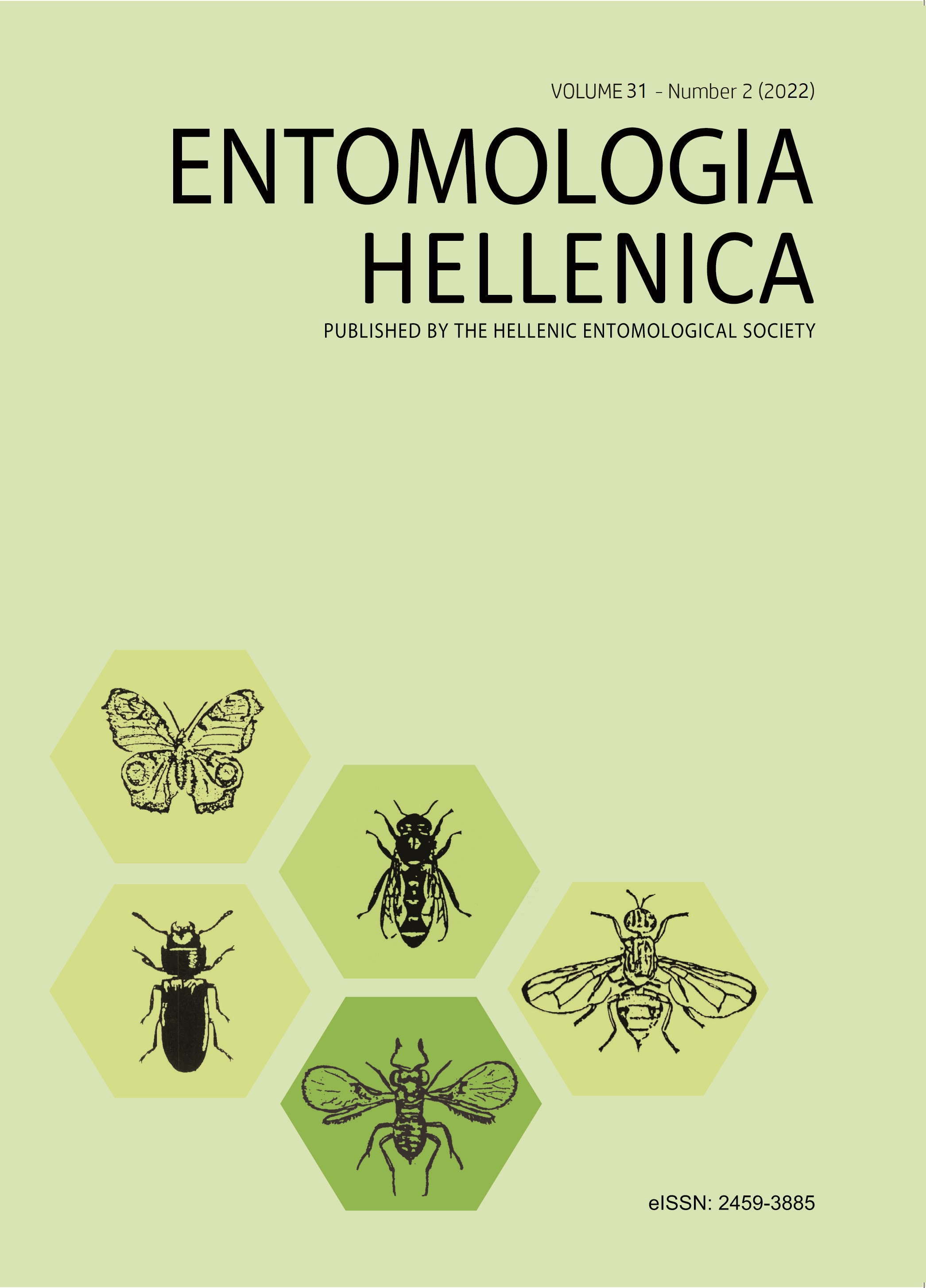Compatibility and combined efficacy of entomopathogenic fungi and neonicotinoid insecticides against Myzus persicae (Sulzer): An ecofriendly approach

Abstract
Efficacy of different entomopathogenic fungi (EPF) viz., Beauveria bassiana, Metarhizium anisopliae and Lecanicillium (=Verticillium) lecanii and neonicotinoid insecticides i.e., Imidacloprid, Thiamethoxam and Acetamiprid were evaluated alone and their 1:1 combination against Lipaphis erysimi prevalent in vegetable ecosystem. Among the entomopathogenic fungi, B. bassiana was found most promising registering lowest median lethal time (LT50) of 48.17, 48.92 and 48.87 h during the period of 2018, 2019 and 2020, respectively, followed by L. lecanii (49.57, 49.45 and 50.46 h), M. anisopliae (51.81, 51.67 and 51.63 h). Amongst the three neonicotinoids, Acetamiprid was found more efficacious than the Imidacloprid and Thiamethoxam. Blending of B. bassiana and Acetamiprid at half of their recommended dose took lowest (22.76, 23.48 and 23.06 h during 2018, 2019 and 2020, respectively) lethal time to kill the fifty per cent test population followed by L. lecanii + Acetamiprid (22.58, 22.68, 22.52 h) and M. anisopliae + Acetamiprid (22.61, 23.82, 23.60 h). Combinations of these entomopathogenic fungi and neonicotinoid insecticides had co-toxicity co-efficient values > 1 and lower LT50 values than each of their individual indicating the compatibility amongst them. Co-application of these EPF with sub-lethal concentration of neonicotinoids could not only be a green ecofriendly option against this sucking pest but also able to minimize the chemical insecticides load in the environment.
Article Details
- How to Cite
-
Halder, J., Majumder, S., & Rai, A. B. (2021). Compatibility and combined efficacy of entomopathogenic fungi and neonicotinoid insecticides against Myzus persicae (Sulzer): An ecofriendly approach. ENTOMOLOGIA HELLENICA, 30(1), 24–32. https://doi.org/10.12681/eh.25417
- Issue
- Vol. 30 No. 1 (2021)
- Section
- Articles

This work is licensed under a Creative Commons Attribution-NonCommercial-ShareAlike 4.0 International License.
Authors who publish with this journal agree to the following terms:
Authors retain copyright and grant the journal right of first publication with the work simultaneously licensed under a Creative Commons 4.0 license.
Authors are able to enter into separate, additional contractual arrangements for the non-exclusive distribution of the journal's published version of the work (e.g. post it to an institutional repository or publish it in a book), with an acknowledgement of its initial publication in this journal. Authors are permitted and encouraged to post their work online (preferably in institutional repositories or on their website) prior to and during the submission process, as it can lead to productive exchanges, as well as earlier and greater citation of published work.



